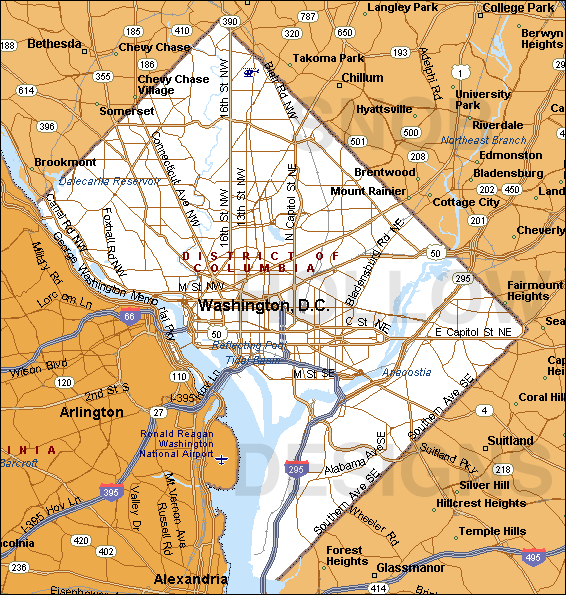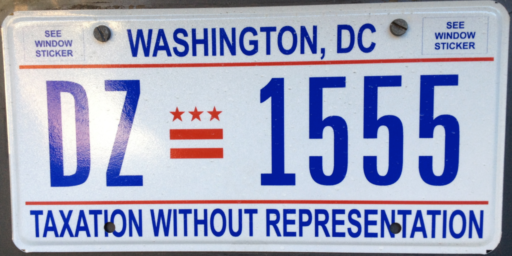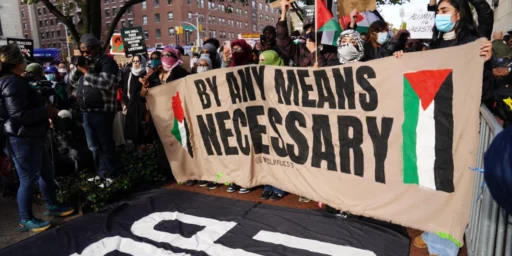Why ‘Washington, DC’?
 Most of us who live in the area call the nation’s capitol “DC” or “the District” or, less often, “Washington.” But, officially, of course, it’s “Washington, District of Columbia” or “Washington, DC” for short. The Constitutional origins of the “District” part are well known and the “Columbia” part isn’t all that interesting; they had to call it something. But why have a city within a tiny city-district?
Most of us who live in the area call the nation’s capitol “DC” or “the District” or, less often, “Washington.” But, officially, of course, it’s “Washington, District of Columbia” or “Washington, DC” for short. The Constitutional origins of the “District” part are well known and the “Columbia” part isn’t all that interesting; they had to call it something. But why have a city within a tiny city-district?
Orin Kerr explains:
Under the District of Columbia Organic Act of 1801, the original 10-mile square District of Columbia consisted of five political entities. On the Maryland side, there was the preexisting town of Georgetown (now the neighborhood of Georgetown); then there was the new City of Washington (today, downtown DC); and then the County of Washington generally (consisting of the whole of the land ceded from Maryland, most of which was rural and outside the town of Georgetown and the new planned city of Washington). On the Virginia side, there was the City of Alexandria (today, most of old-town Alexandria) and the County of Alexandria (consisting of the land ceded from Virginia, most of which today is Arlington). So after the 1801 Act, a designation like “Washington, District of Columbia” would make sense: The District of Columbia had several different cities and counties within it, and the City of Washington was only one of them. That changed over time. First, in 1846, Congress gave back the Virginia parts of the District of Columbia to Virginia, leaving only Georgetown, the city of Washington, and the County of Washington. Then, in 1871, Congress passed another Act merging the remaining parts of the DIstrict of Columbia into a single political entity.
I knew that the Virginia part of the District was retroceded in the 1800s but don’t think I’d ever heard the rest of the story.




